
From wildflowers to where to camp a practical guide for exploring Death Valley National Park
Read moreRecognised globally as one of the most unique places on Earth to visit, the Death Valley National Park has provided visitors from every corner of the globe with memories to last a lifetime. Whether thanks to the one-of-a-kind geology found here or the breathtaking aesthetic of this natural wonder, Death Valley is a land like no other.

An introduction to Death Valley National Park
A brief history
President Herbert Hoover would be the first to truly recognise the significance of the park as a national icon – creating the Death Valley National Monument in 1933. This would officially get upgraded in 1994, when the monument was made a national park, and a further 1.3 million acres were added to its reach. But how did the park reach this point? Here’s a quick breakdown of what led to this landmark moment.
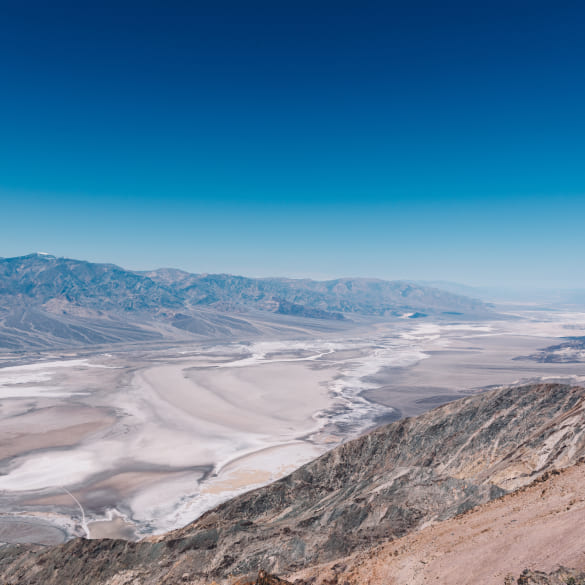
Indigenous People
Despite the relatively contemporary declaration of Death Valley as a national park, it could be argued that its history stretches back as far as 1.8 billion years. The oldest metamorphic rocks found in the valley can be dated to this time, and are a part of the exposed Black Mountains.
Over the course of hundreds of millennia, the valley would evolve into the basin we know it as today. The first inhabitants of the park were believed to have appeared nearly 10,000 years ago. The Nevares Spring were hunter gatherers, and the earliest known settlers to call the park home.
As time went on they would eventually be replaced by the nomadic Timbisha people, who remain the local inhabitants of Death Valley to this day. They were partly responsible for the forming of the Death Valley Indian Community reservation, where roughly 50 members of the tribe continue to live to this day.
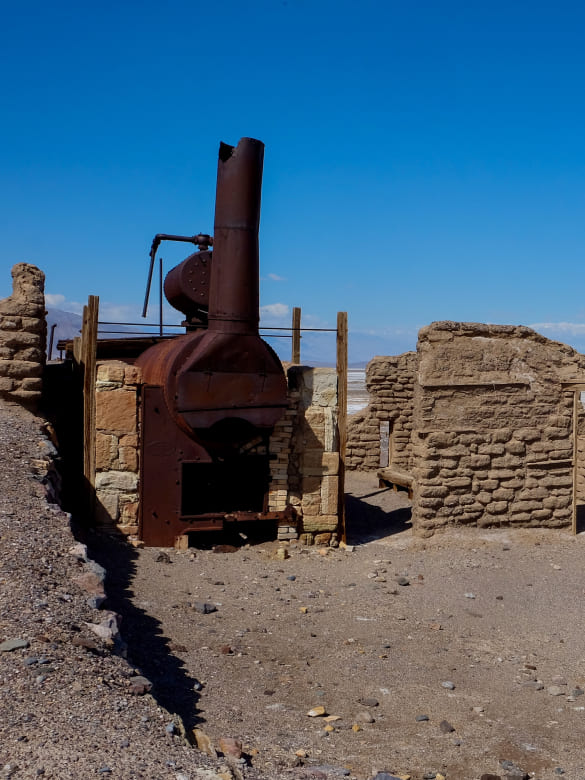
Mining
The initial peace of the Timbisha was shattered in 1848, with the first discovery of gold in California. During this period, any large open area of land in the state was explored for any shred of the precious metal they could find. Death Valley was no exception to this, with operations beginning in the 1880s, running all the way through until 2005.
Despite initial struggles, the Harmony Borax Works ended up being the first success story of the park – although not for the reasons you might expect. While their ore deposit haul was sparse, the company rose to fame owing to a marketing campaign that saw them use a 20-mule team to transport all partially refined borax.
In truth, mining efforts in Death Valley were ultimately fruitless in comparison to neighbouring success, with any small mining communities set up in the park effectively becoming ghost towns by 1915. Mining closed entirely in 1933 when President Hoover signed the proclamation creating Death Valley National Monument, although by the end of that year operations opened again, albeit in smaller capacity.
The advance of technology in the second half of the 20th century meant borate, talc and sulphur mining operations kicked into gear once again – but this time with far more impact on the natural environment. This led to outcry from local people and authorities, which would result in enough pressure being put on mining operations to all but cease by the start of the 21st century. The final mine, named Billie, was closed in 2005.
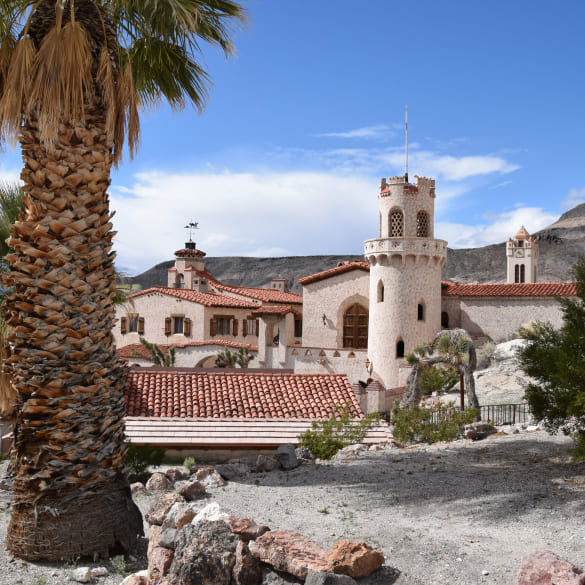
Commercialism and tourism
As commercialism and consumerism became the norm in 1920s America, the unique landscape served as a popular draw for those looking to make a buck off a populous with more cash in their pockets than at any other point in history.
A host of hotels and tented camping areas were set up to accommodate people using the valley as a winter getaway. The most famous of these was ‘Scotty’s Castle’. This large ranch home, built in the Spanish Revival style, became famous across America, drawing more people to the park.
The Great Depression would halt the flood of people to the park for leisure, but not kill it altogether. Visitors began favouring camping options as they were cheaper and more practical. This trend would persist through to the modern day, with the park receiving an estimated 1.1 million visitors each year.
The park's unique geology
Death Valley is famed for holding a number of geological and weather-related records. Perhaps most famous of all is its spot as the ‘hottest place on Earth’. The park recorded a blistering air temperature of 57°C (134°F) in July of 1913, which has remained the highest temperature ever seen on our planet for over 100 years.
This natural phenomenon has another park record to thank for its existence. The Badwater Basin is the lowest point in the entirety of North America, sitting 282ft below sea level. This, contrasted with the steep 11,049 foot Telescope Peak and other mountain ranges that surround it, mean that heat radiating from the rocks and soil found in the valley are trapped in this basin.
Naturally, owing to this extreme heat, Death Valley itself can be considered a desert. Sand dunes and large carved-out basins and trenches (which show water once flowed here) dominate the landscape. But a number of other unique geological findings can be explored by intrepid park-goers:
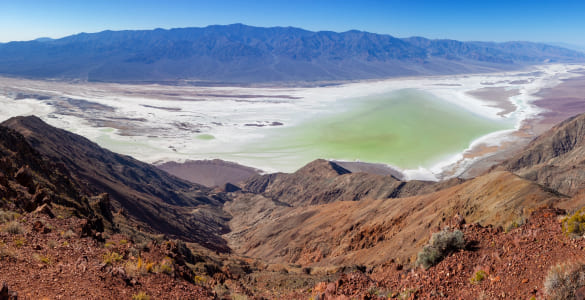
Ancient seas
Rocks from 500 million years ago show that a sea once flowed through here, during the Paleozoic Era. The limestones and sandstones found in the Funeral and Panamint Mountains contain signs of basic ancient sea life, with fossils from this area available to inspect in the Furnace Creek Visitor Center.
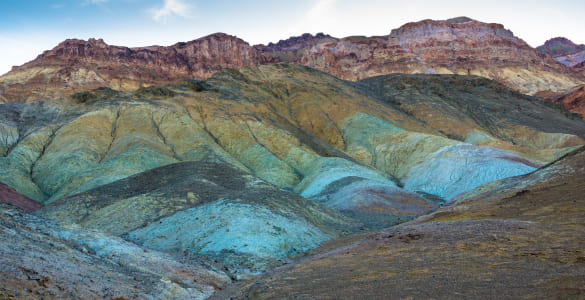
Volcanoes
A chain of volcanoes from Furnace Creek to Shoshone have moved slowly into the area over the years, having originally sprung to life in Nevada. It’s the volcanic eruptions which occurred here that have given life to the vivid colours found in the Artist’s Palette.
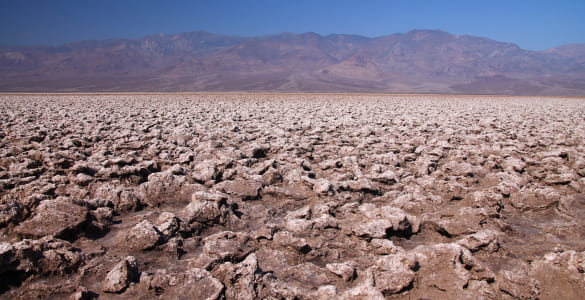
Lost lakes
The salt deposits which the park has become famed for are the result of an ancient lake drying out more than 10,000 years ago. Following this, another, smaller lake system also temporarily formed in the basin 3,000 years ago – but this would also evaporate as a result of the immense heat in the valley.
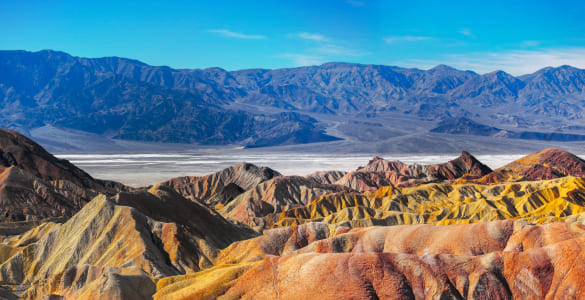
Warped mountains
Owing to its proximity to two tectonic plates between the Earth’s crust, the mountains in Death Valley possess a warped, otherworldly quality. This is the result of them being folded and made more brittle over time when compared to traditional mountains.
Within this beautiful landscape specific points of interest and wonder have formed over centuries of natural erosion. Next, we’ll take a look at some of the most exciting areas to visit throughout Death Valley National Park.
Entrance fees and costs
The park is a beautiful and iconic landmark – but in order for it to continue providing years of enjoyment to visitors, it’s only fair that those visiting give back a little. As such, there are a handful of entrance fees which you’ll have to pay to continue exploring Death Valley for decades to come. If you’re thinking about a holiday to Death Valley National Park, here are some of the most important.
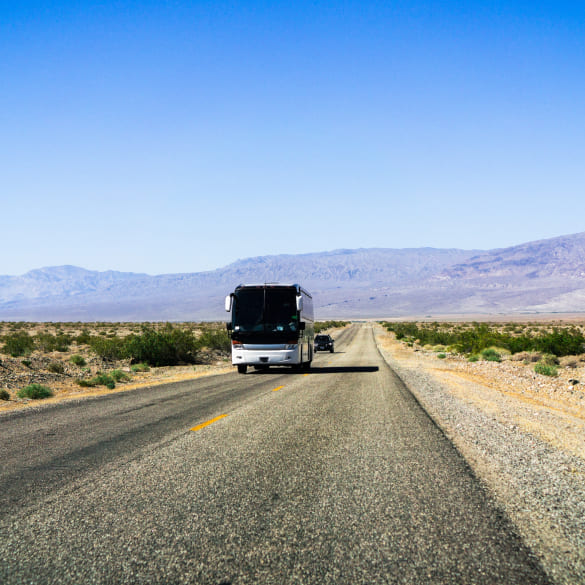
Entrance passes
- Per person – $15
- Private vehicle – $30
- Motorcycle – $25
Organisation and business passes
- Educational or academic group – $0
- Commercial vehicle (1-6 seats) – $35-$75
- Commercial van (7-15 seats) – $75
- Commercial mini-bus (16-25) – $100
- Commercial motor coach (26+ seats) – $200
- Non-commercial group (16+ people) – $15
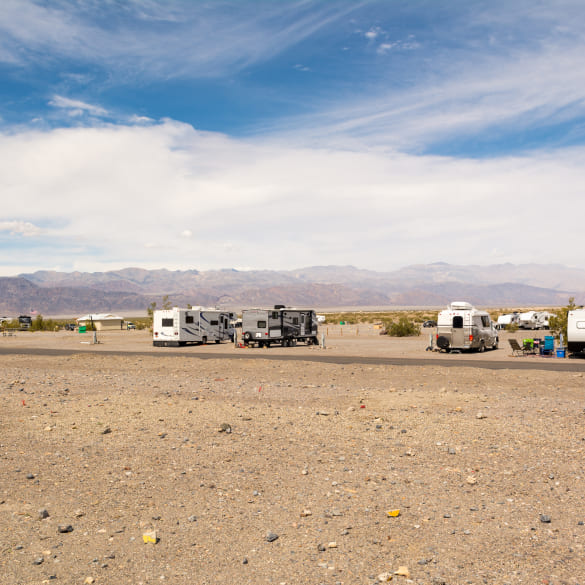
Annual entrance passess
For the flat price of $55 a pass holder can enter the park in a single non-commercial vehicle as many times as they like throughout the course of 12 months. These passes can be acquired in the following areas:
- Furnace Creek Visitor Center (Credit/Debit Only)
- Stovepipe Wells Ranger Station (Credit/Debit Only)
- Furnace Creek Campground (Credit/Debit Only)
- Panamint Springs Resort (Cash or Credit/Debit)
Free days for 2024
There are several days each year where no entrance fee is required to visit the park. In 2024, those days are as follows:
- Monday, January 15 — Martin Luther King, Jr. Day
- Saturday, April 20 — First Day of National Park Week
- Wednesday, June 19 — Juneteenth
- Sunday, August 4 — The Great American Outdoors Act
- Saturday, September 28 — National Public Lands Day
- Monday, November 11 — Veterans Day
All entrance fees can be paid online on the Recreation.gov website, as well as in person at any of the following locations within the park:
- Furnace Creek Visitor Center
- Stovepipe Wells Ranger Station
- Furnace Creek Campground kiosk (when staffed October 15 to April 15)
There are also a number of fee machines which operate in different corners of the park throughout the course of the day. These machines can be found in the following places:
- Furnace Creek Visitor Center
- Stovepipe Wells Ranger Station
- Grapevine Ranger Station
- Ryan Kiosk (east entrance to park on Hwy 190)
- Zabriskie Point
- Badwater
- Hell's Gate (Daylight Pass Road)
- Furnace Creek Campground (April 16 to October 14)
- Sunset Campground (when open)
- Texas Springs Campground (when open)
- Stovepipe Wells Campground (when open)
- Mesquite Springs Campground
Remember also that campground fees will differ and serve as additional costs. Be sure to check out how much you can expect to pay for each campsite here.

Exploring Death Valley National Park
Points of interest, landmarks and attractions
A vast and diverse desert landscape, Death Valley National Park is full of points of interest and landmarks. Here are some of the most notable:
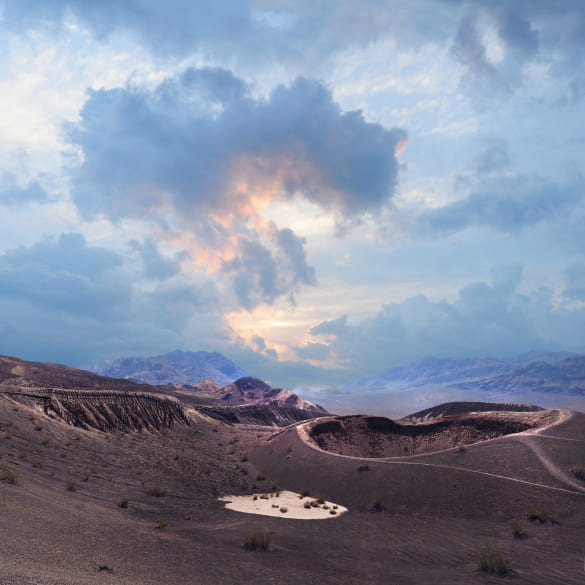
Zabriskie Point
Known for its panoramic views of the badlands, Zabriskie Point is one of the most famous viewpoints in Death Valley. It’s especially popular during sunrise and sunset.
Dante's View
Located at an elevation of 5,475ft, Dante's View provides another breathtaking panoramic vista of Death Valley. On a clear day, you can see as far as the Sierra Nevada mountains.
Ubehebe Crater
An impressive half-mile wide and 500ft deep, this crater was formed over 2,000 years ago from a volcanic steam explosion. Today, visitors can explore the area around the crater, taking in the dramatic scenery and learning about the geological history of the region.
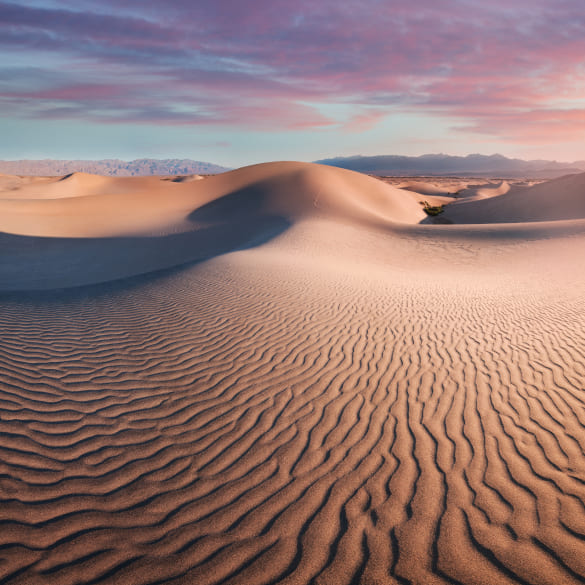
Mesquite Flat Sand Dunes
These iconic sand dunes are located near Stovepipe Wells Village. They offer a great opportunity for photography and exploring the ever-shifting sands.
Artist's Palette
This colourful geological formation is a must-see within Death Valley. The mineral-rich hills showcase vibrant hues, ranging from pink and purple to green and gold.
Furnace Creek Visitor Center
Acting as a central hub for Death Valley tourism, the Visitor Center offers a wide range of exhibits, programs, and educational resources that help people learn about the park's unique geology, history and wildlife.
Harmony Borax Works
Here you can explore the remnants of an old borax processing plant, which played a significant role in the mining history of Death Valley.
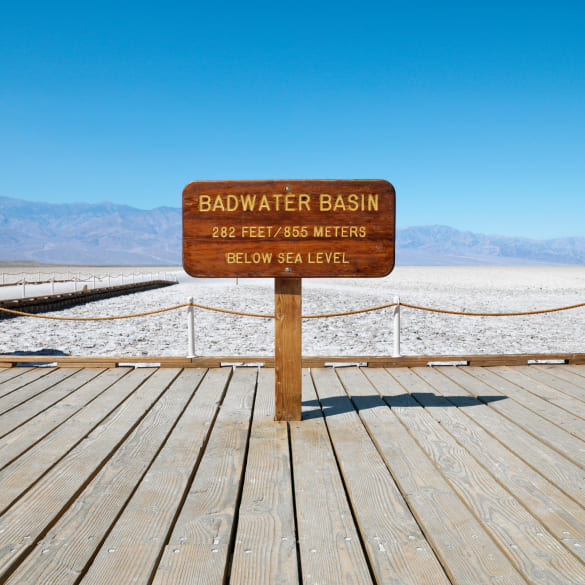
Badwater Basin
This expansive salt flat is the lowest point in North America, sitting at 282ft below sea level. Visiting here is something of an otherworldly experience, offering unique views and geological formations.
Scotty's Castle
While temporarily closed due to flood damage, Scotty's Castle is a historic house museum that offers guided tours. The Spanish-style castle appears like a mirage in the desert when you arrive and has a fascinating history linked to gold mining in the Death Valley area.
Wildrose Charcoal Kilns
These well-preserved beehive-shaped structures were used in the late 1800s to convert wood into charcoal. They make for an interesting stop along the Wildrose Canyon Road.
Recommended outdoor activities
Hiking
Death Valley is a hiker's paradise. The abundance of trails and routes offer the opportunity to discover diverse flora and fauna, rugged terrain, and stunning vistas. Here are just a few examples of hikes which are ideal for first-time visitors:
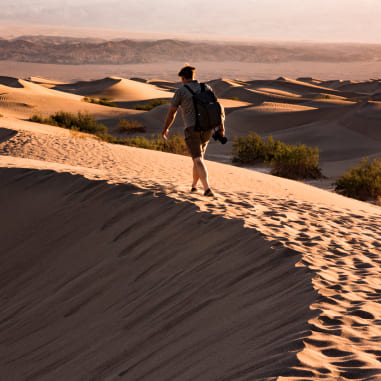
Mesquite Flat Sand Dunes
The most famous and accessible dunes within the park, there’s no formal trail to hike here. But once you park up, you can explore yourself – it’s one mile to the summit of the dunes, with a 185 ft (65m) elevation gain. Although short, the hike up can be quite strenuous due to the sandy surface. You’re rewarded with an incredible panorama at the top, though.
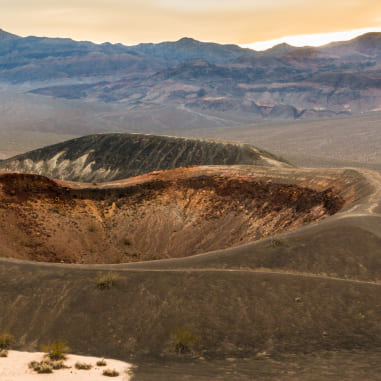
Ubehebe Crater Loop
A route that takes you close to the edge of Ubehebe Crater over a 500 ft (152m) elevation gain, this isn’t a hike for those with a fear of heights. The main loop is 1.5 miles (2.4km) and would take the average walker about an hour, but leave plenty of time to take in the views.
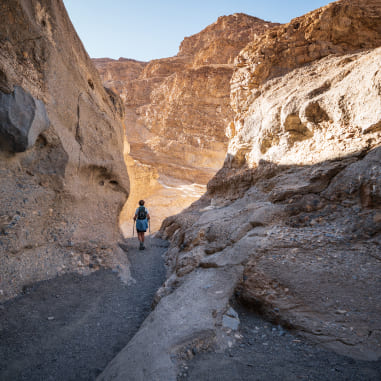
Mosaic Canyon
Another popular place to hike, you can make this a longer adventure by exploring beyond the initial narrow canyons. Depending on the route you take, there may be some short sections of rock scrambling involved, but you can expect to see Mosaic Canyon Breccia – tiny but beautiful angular fragments of various types of rock.
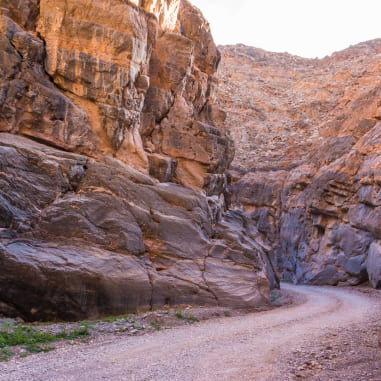
Titus Canyon Narrows
The route to the parking for the Titus Canyon Narrows is as beautiful as the hike itself, with a gravel car park located at the end of a bumpy road. Most people hike the well-marked three miles (4.8 km) through the narrowest canyons, but you can go further if you want to try and look for bighorn sheep.
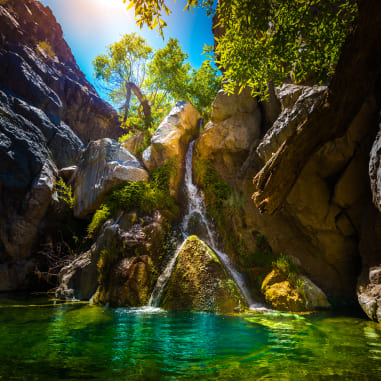
Darwin Falls
Hiking to Darwin Falls takes you through a dusty canyon before reaching a lush oasis that leads directly to a waterfall in the desert. It’s yet another reminder of the varied landscapes you find in Death Valley. The roundtrip is about two miles (3.2km) from the starting point where you park.
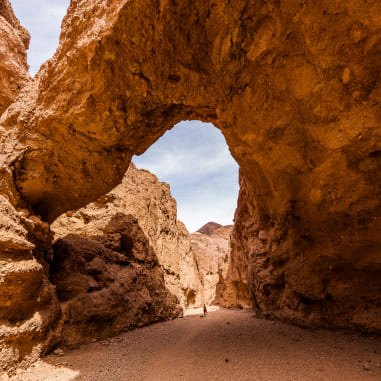
Natural Bridge Canyon
Another easy two mile hike, this route takes you to a natural bridge that’s been formed over thousands of years due to flash flood events that have carved the shape of the canyon. As with many of the hikes in Death Valley, you can go further than the bridge to explore more. Expect to see more examples of interesting geology including dry falls, vertical chutes and hanging canyons.
The best time to hike in Death Valley is from November through March, avoiding the highest temperatures in summer.
For keen runners, there’s lots of cross country opportunities for rocky runs too. Death Valley is known as a good place for technical trail running. But it does require good orientation skills and safety preparation, as well as experience on uneven terrain.
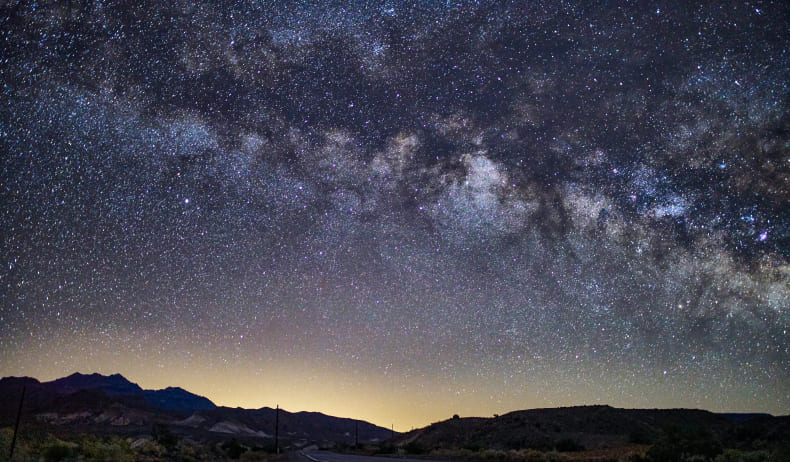
Stargazing
With some of the best stargazing in America, it’s important to see Death Valley at night. In fact, it’s been designated as the largest Dark Sky National Park in the country by the International Dark Sky Association and designated as a ‘Gold Tier’ Dark Sky Park, the highest level awarded. Great measures are taken to minimise light pollution in the area.
You can either join local stargazing tours or plan your own trip. There’s no shortage of fantastic spots to stop and enjoy the night sky. It’s best to try and go during the new moon phase (when there’s no bright moon to wash out the light from fainter stars) and pick an elevated area to view the stars from. Remember to give your eyes time to adjust to the dark too – it’s not an experience you need to rush.
During winter and spring, Death Valley National Park Rangers host several stargazing events within the park. In spring, they hold the annual Dark Sky Festival – a collaboration between Death Valley National Park, Death Valley Natural History Association, NASA's Goddard Space Flight Center, Jet Propulsion Laboratory and Ames Research Center, SETI Institute and California Institute of Technology.
Wildlife spotting
Given its extreme climate, you might assume Death Valley is an inhospitable place for wildlife. But that’s not the case and there’s plenty of wildlife for visitors to try and see. The species you find here have adapted to the harsh conditions, taking advantage of the diverse habitats available.
After all, Death Valley is more than just a desert. So while the salt pan, valley floors and lower slopes have no or limited flora, there are other vegetation zones – typically where water is available (annual precipitation reaches over 15 inches in the higher mountains, according to NPS). So you can find natural oases, woodlands and pine forests, where a great diversity of plants and animals thrive.
Animals that live throughout Death Valley National Park include:
- Desert bighorn sheep
- Roadrunners
- Coyotes
- Desert kit foxes
- Tortoises
- Kangaroo rats
- Sidewinder rattlesnakes
- Blacktail jackrabbits
- Bobcats
- Gophers
- Bats
- Lizards
In fact, over 400 species call the park home. The most intriguing, perhaps, is the Salt Creek pupfish – a fish that’s not found anywhere else in the world. Remnants of the Ice Age, they’re now found exclusively in the Salt Creek drainage of Death Valley.
There’s no guarantee you’ll spot any of Death Valley’s animals, but some tips for wildlife spotting include:
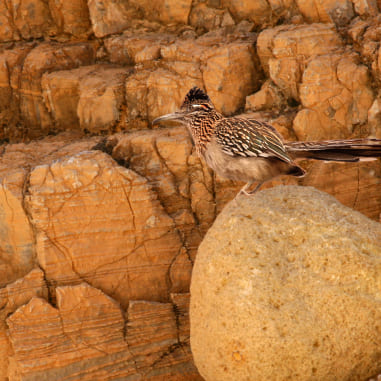
Take binoculars
In order to keep a respectful distance but increase your chances of seeing animals, using wide-angle binoculars will help.
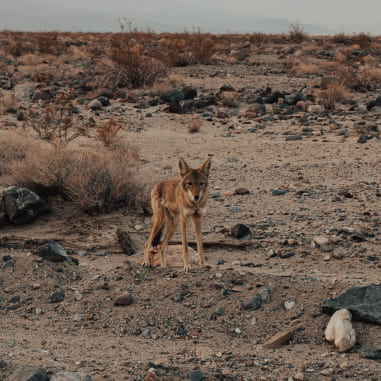
Be quiet and still
It often takes time and patience to spot wildlife, as you’ll need to limit your movements and try to blend into the environment. You should never try to approach the animals.
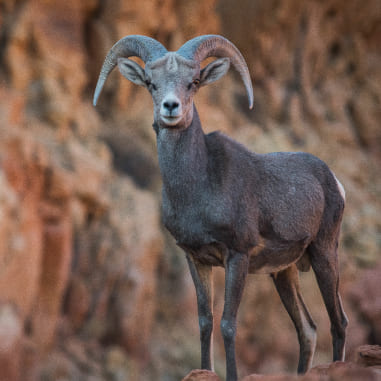
Visit water sources
The water sources scattered throughout Death Valley, including Darwin Falls and Saratoga Springs, attract animals.
Birdwatching
Birdwatching is also particularly popular, as the park falls on the migration route for hundreds of species of birds. Death Valley also has lots of birds year-round, including wrens, warblers, thrashers, sparrows and finches.
The spring or fall migrations are, of course, popular times for birdwatching. But you can also boost your chances of seeing more birds by visiting some of Death Valley National Park’s birding hotspots:
- Furnace Creek
- Scotty’s Castle
- Saratoga Spring
- Wildroe
- Panamint Range
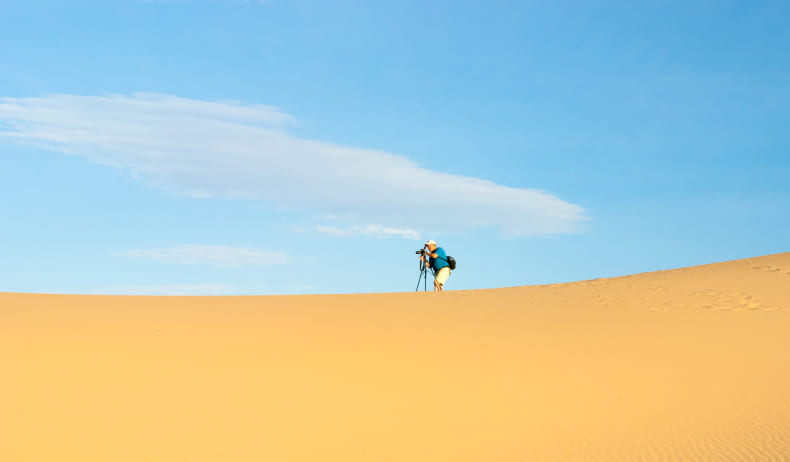
Photography
Unsurprisingly, Death Valley National Park is a great place for amateur and professional photographers. Whether you plan your visit specifically to capture the destination’s unique beauty or you just want to have memorable photos of your trip, the diverse range of landscapes, from sand dunes to salt flats, and unique geological formations, provide endless opportunities to capture unique and awe-inspiring shots.
A note on backpacking and backcountry driving
With three million acres of designated wilderness in the park, backpacking and backcountry camping (staying in areas which aren’t designated camping sites) has always been popular. Travellers can explore and access remote locations, travelling along the bottom of canyons, across open desert washes, around alluvial fans and on abandoned roads. Paved and dirt roads also intersect the park.
However, Death Valley National Park was hit by historic floods in August 2023, closing many of the roads and making many areas difficult – or impossible – to access. As a result, the current advice from the National Park Service is to avoid backcountry travel:
‘Many backcountry roads were heavily impacted or closed by recent flooding – backcountry travel is not advised. Visitors should expect additional hazards and roads in far worse condition than stated in the Backcountry and Wilderness Access Map. Many areas have not been assessed for damage. Some areas are impassable – do not plan on through travel. If you choose to travel on backcountry roads, be aware that rescue is likely to be extremely delayed. Travel prepared to survive, with two full size spare tires and extra food and water.’

Wildflowers and the superbloom phenomena
Another reason many people visit Death Valley National Park is because of the chance to see a rare occurrence of an exceptionally large and vibrant display of wildflowers – the superbloom phenomena. Due to the arid environment of Death Valley, this is a unique ecological phenomenon that only happens when the right conditions come together.
The superbloom phenomena doesn’t happen every year. In fact, decades can pass before the right conditions stimulate the germination and growth of dormant seeds. These seeds hibernate for years at a time until the conditions are perfect for them to blossom. When they bloom depends on climatic factors, such as rainfall patterns and temperature fluctuations. Some years will produce better conditions for a superbloom to happen, and the result is a sea of colourful blossoms which carpet the hottest, driest floor in North America.
The types of flowers you can expect to see during a superbloom also vary, but can include:
- Desert gold
- Desert chicory
- Primroses
- Sand verbena
- Desert five-spot
- Mariposa lily
- Desert dandelion
- Lilac sunbonnet
The abundance of wildflowers is a rare and remarkable spectacle. The blooms also attract a
large numbers of pollinators such as butterflies, moths, bees and hummingbirds – creatures would be unlikely to otherwise visit Death Valley, due to its typically arid conditions.
In 2023, Death Valley saw an above average year for a wildflower bloom thanks to a cooler winter, spring showers and heavy rains from the last summer. However, it wasn’t a superbloom. The last superbloom was in 2016. As a National Park Service employee, Alan Van Valkenburg, told High Country News at the time:
“When I first came to work here in the early 1990s, I kept hearing the old timers talk about super blooms as a near mythical thing…I saw several impressive displays of wildflowers over the years and always wondered how anything could beat them, until I saw my first super bloom in 1998. Then I understood.”
Advice for managing the extreme temperatures
Death Valley National Park is a place of extremes – the park spans from -282 ft. at Badwater Basin to just over 11,000 ft. atop of Telescope Peak. It’s what makes it such a remarkable place to see.
But it does also mean that whatever activities you spend your time enjoying in Death Valley National Park, you do need to take care. The extreme climate creates potentially riskier conditions for visitors:
- Summer temperatures can top 49°C (120°F) in the shade.
- While average rainfall is just 2 inches (5 cm), occasional thunderstorms can cause flash flooding.
- Higher elevations can reach much cooler temperatures, especially in winter, and can be covered in snow and ice. Temperatures drop 2 to 3°C (3 to 5°F) approximately every 300m of height gained.
- Wind is common and dust storms can quickly change the temperature.
Being aware of the weather, checking conditions before exploring and preparing adequately will ensure you stay safe. Phone service in the park is unreliable so it’s important you have enough supplies. Of course, one of the main risks is the heat, so make sure you:
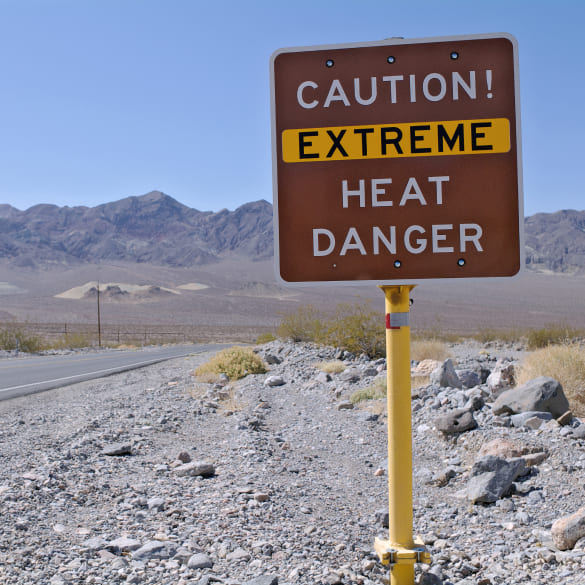
Know your own heat limitations
The extreme temperatures and low humidity levels in Death Valley make it a challenging environment for even the most experienced hikers and outdoor enthusiasts. It's essential to listen to your body and take appropriate precautions.
Always carry adequate water
Intense heat can easily cause dehydration, leading to dizziness, headaches and other dangerous health complications. By carrying enough water with you, you can prevent the risk of overheating and ensure proper hydration.
Explore at the start or end of the day, avoiding the highest temperatures
As one of the hottest places on earth, it's crucial to consider timing when exploring the park. Not only will this make your experience more enjoyable, but it will also ensure that you remain safe and healthy.
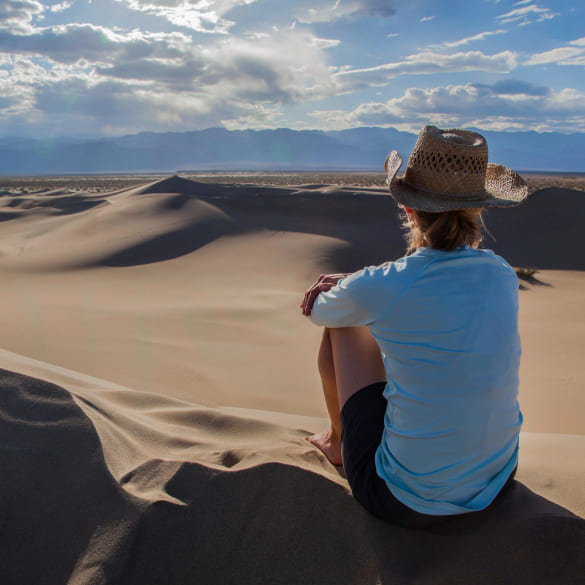
Avoid the lower elevations in the hotter months
During the hotter months, it's crucial to avoid the lower elevations where temperatures can soar. With little to no shade, it's easy to become overheated and dehydrated.
Wear SPF
Wearing sunscreen with a high SPF is the best way to keep your skin safe. It’ll help prevent sunburn, premature ageing and other skin damage.

Preserving the park
With such a beautiful area of natural wonder, it’s important to do what we can to ensure it’s protected. Preserving the park means others can enjoy it for years to come. And keeping it green and pristine isn’t just the job of conservation groups. It’s up to everyone to pitch in and do their part to help protect the fauna, wildlife and landscape of Death Valley.
The importance of responsible outdoor practices
As visitors to the park, we have a responsibility to do what we can to keep it safe and protected. Arguably the best way to achieve this is by following the ‘Leave No Trace’ principles. These seven moral guidelines exist to make it easier to understand what is or isn’t allowed when exploring areas of greenery.
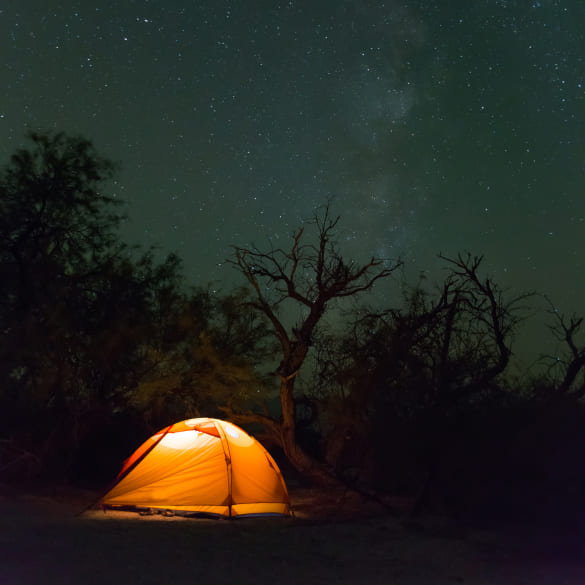
1. Plan ahead and prepare
Fail to prepare and you’re preparing to fail. It’s a slightly cliché expression, but it applies in earnest when visiting areas known for extreme conditions. Death Valley is the prime example of one such place. Be sure to understand what conditions will be like when you visit, and know exactly what regulations are in place for every area you plan on exploring. Try to schedule your trip for a less busy period, and think about going in a smaller group to reduce the impact on the natural environment.
2. Camp and travel on durable surfaces
Good campsites are found, not made. Enough people have come before you for it to be clear and obvious what the best spots for pitching a tent are. Similarly, try to keep travel routes to durable surfaces that have been well trodden in the past. This is both safer and less impactful.
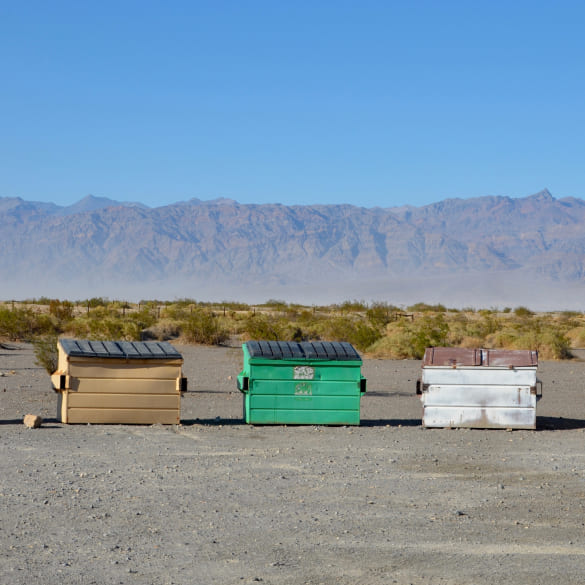
3. Dispose of waste correctly
No rubbish should be left behind in your campsite – that’s a given. When it comes to waste which is harder to avoid creating, make sure to dig solid catholes for human waste to be deposited into. These should be six-to-eight inches deep, and 200m from any water sources. If you’re using water to wash yourself or dishes, carry it 200m away from any streams or lakes, and use biodegradable soap.
4. Leave what you find
It’s perfectly acceptable to catalogue your adventures with a photograph, but it’s not encouraged to take home any natural souvenirs with you. Also don’t leave anything behind. That means structures that you’ve built, or even something extreme like a species of creature that isn’t native to the area.
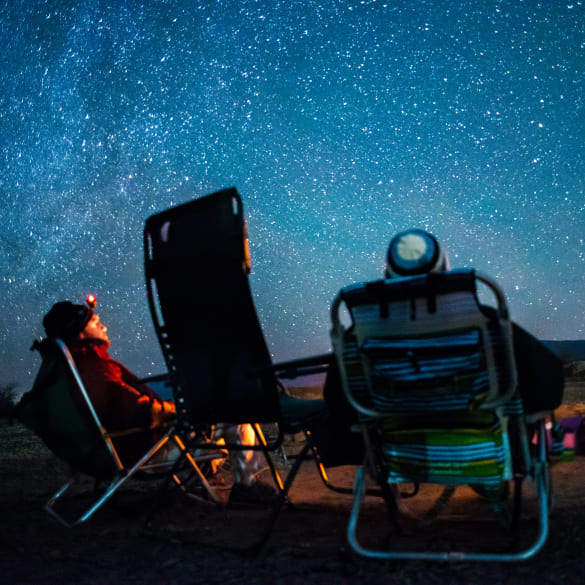
5. Minimise the impact of campfires
Fires need to be kept small, and only made in established fire rings, fire pans or mound fires. Any wood which is used in the fire needs to be burned completely to ash, and then dispersed (when cool) throughout the area – not just dumped in a pile.
6. Respect wildlife and fauna
Observe wildlife from a distance and never feed them. Keep your food stored in containers that are not accessible, and make sure any food waste is disposed of properly. Pets should be controlled at all times (keep them at home if you can’t), and try to understand seasons when wildlife might be mating, nesting or raising young.
7. Be considerate of other visitors
Finally, be polite and courteous to other visitors. Just as you would in most normal settings, try to keep volume to a minimum in campsites, and make way for those who might struggle on narrow paths. Treat others as you would like to be treated yourself.
Conservation efforts
Regular efforts have been made throughout the years to ensure that Death Valley National Park remains a healthy, thriving ecosystem for the wildlife and fauna which lives there. Pioneering this charge are the members of The Death Valley Conservancy. This not-for-profit group is the largest solely dedicated to helping this particular park, and was formed in 2006.
The Death Valley Conservancy (DVC) has been at the forefront of a lot of innovative projects in recent years. These have ranged from protecting local endangered species, to restoring or recreating areas and artefacts which have historical significance in Death Valley. Some of their most successful projects include:
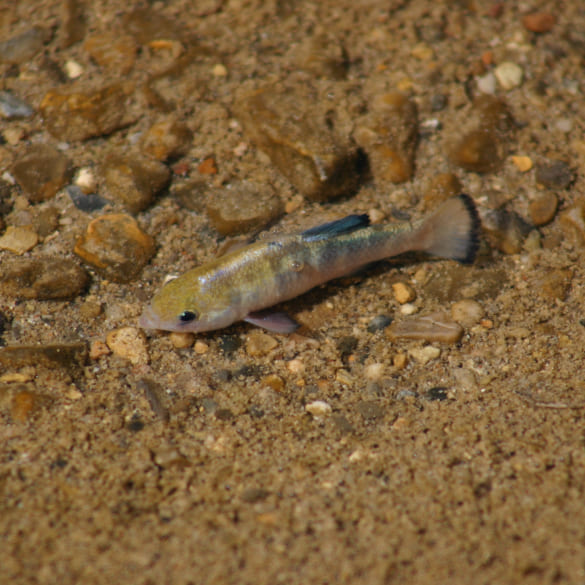
Pupfish research
Described by many as one of the world’s rarest fish, the pupfish is an inch-long form aquatic life that can exist in incredibly harsh conditions. Found in the detached unit of Death Valley called the Devil’s Hole, this species is endemic to this one specific area. As a result conservation efforts have been in place since 1967 to protect this highly endangered species. Regular studies are funded by the DVC to count the pupfish, as well as donations being made towards the production of specialist underwater technology.
Replica Borax Wagons
The Borax Wagons are a callback to those used by the 20-mule team which once worked in the valley to transfer borax 165 miles across the area. The wagons are regularly used at parades, and sit in the park throughout the rest of the year when not in use. An important part of history, the original wagons are also kept in the park year-round.
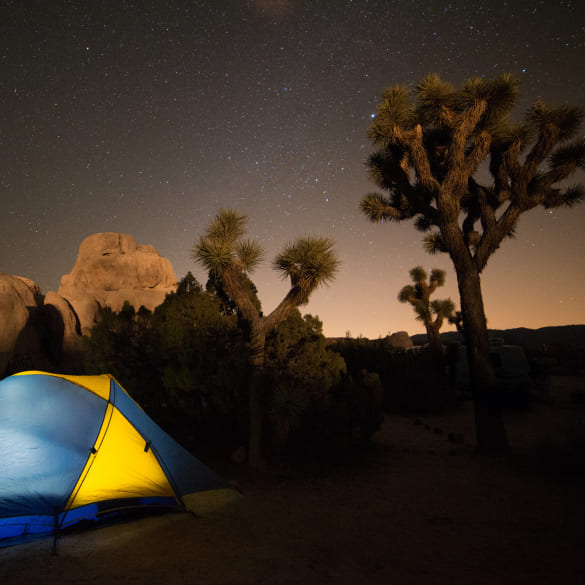
Ryan Mining Camp
This camp has been under the stewardship of the DVC since 2013. While manmade, this campsite is a remarkable glimpse into the lives of the miners who worked in Death Valley between 1914-1927 (when Ryan became the Death Valley View Hotel). The DVC is preserving what’s left of the camp, and repairing where possible to do so without compromising on the original structures.
Preservation of Scotty’s Castle
This iconic landmark, also known as Death Valley Ranch, was once the go-to destination for those travelling to and through the park. The DVC works to preserve it, while also allowing those not able to visit the park the chance to explore it via virtual reality. You can take a whistle stop tour of the castle on their official website.

Camping fees and backcountry accommodation options
For those wanting to immerse themselves in everything Death Valley National Park has to offer, it might take more than a day of exploring to really fill your boots. Fortunately, there are a host of beautiful campsites dotted throughout the park for anyone looking to extend their stay beyond a few hours.
These locales do come with a fee, but are reasonably priced to ensure that visitors enjoy their stay while in the campgrounds. That said, those wanting to camp on RV sites might expect fees in excess of $30 a night. For other explorers, it’s rare for a price to ever rise about $10 per camper, per night.
Let’s take a closer look at the many different campsites Death Valley has to offer, as well as how much each might cost for a visit.
Developed campgrounds and fees
Death Valley National Park has a wide selection of developed campgrounds for explorers to check out. Which one works best for you will depend on a number of factors, such as location in the park, space requirements, fees and any additional amenities you might need as part of your stay.
Let’s take a look at some of the most popular and iconic grounds in the park in order to help you make a well-rounded and measured decision about where to pitch up:
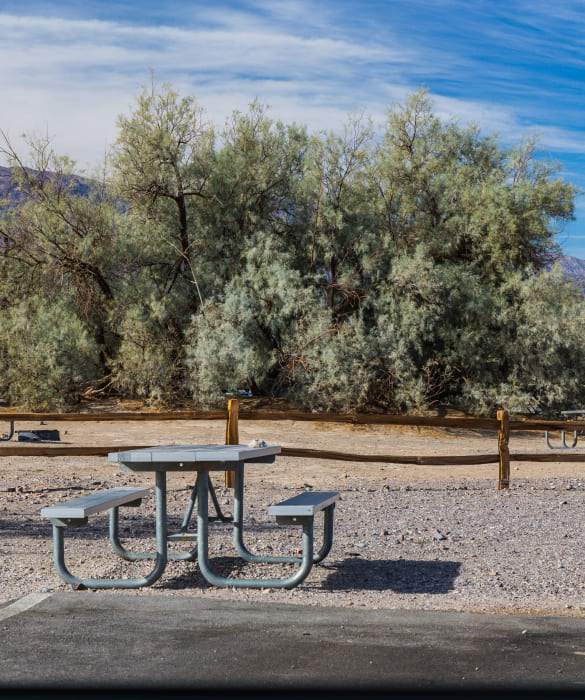
Furnace Creek Campground
- Total sites: 136
- Mobile reception: Yes
- Internet connectivity: No
- Firewood for sale: No
- Food storage lockers: No
- On-site staff: Yes
Currently the only campground in the park which accepts reservations, Furnace Creek is considered the premier location for anyone looking to camp in Death Valley. It can be found adjacent to the Furnace Creek Visitor Center. Reservations can be made between October 15th and April 15th, with a first-come-first-serve basis used throughout the second half of the year.
A generator is used to power the campsite between the hours of 7am to 7pm, while quiet hours on the site are from 10pm to 7am. All liquid waste needs to be deposited at dedicated sanitary stations, while all pets brought into the campgrounds need to be on a lead that is no longer than six ft.
- RV/Tent Sites– $22
- Full Hookup Sites– $36
- Group Sites #3, 4, 5– $35
- Group Sites #1 and #2– $60
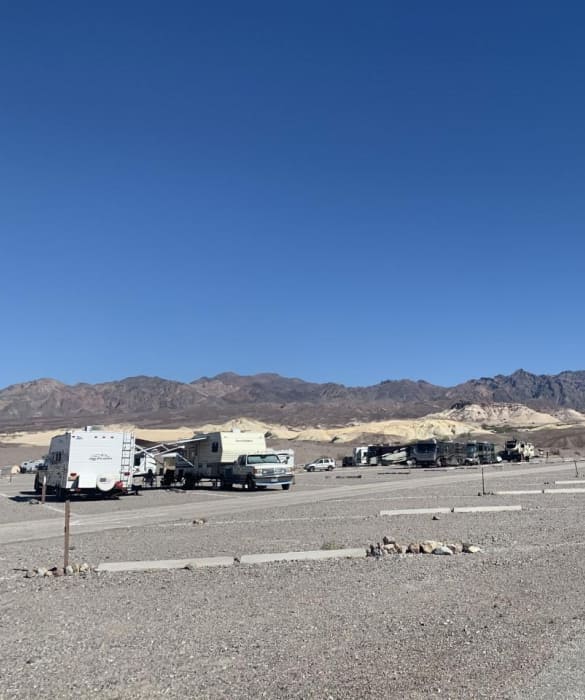
Sunset Campground
- Total sites: 230
- Mobile reception: Yes
- Internet connectivity: No
- Firewood for sale: No
- Food storage lockers: No
- On-site staff: Yes
This campsite is on a first-come first-serve basis, but tends to never fill owing to how large it is. The landscape here is primarily desert gravel with little to no vegetation. The generator here runs from 7am to 9pm every day, with quiet hours between 10pm to 7am. Personal fire grates and charcoal grills are not allowed, but there are two communal fire rings. Gas stoves are also permitted.
There’s no reservation policy at Sunset Campground, but with 230 different sites it’s highly likely you’ll be able to find a spot on the grounds year-round. The camp closes for half of the year, with the open season typically being between October to mid April.
(Image credit: NPS / J. Jurado)
- Standard Camping – $14
- Senior/Access Rate– $7
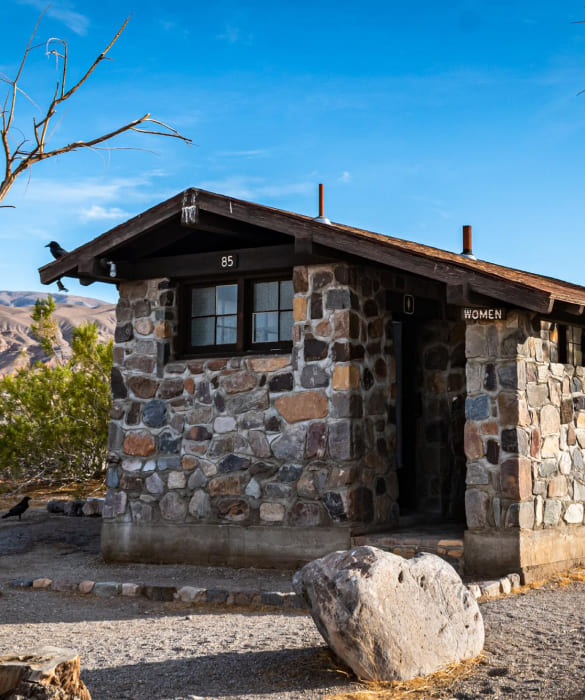
Emigrant Campground
- Total sites: 10
- Mobile reception: No
- Internet connectivity: No
- Firewood for sale: No
- Food storage lockers: No
- On-site staff: No
This smaller campsite is located overlooking the Cottonwood Mountains, but is harder to snag a spot at, owing to just ten camping sites being available on the grounds. Found right next to California State Route 190, Emigrant Campground is elevated 2,100ft above the ground. Toilets are found 270ft down a dirt trail outside the grounds.
Any amenities you need (such as ice and showers) have to be bought at the Stovepipe Wells Resort, which is ten miles away from Emigrant. Fires are not permitted, although gas stoves are allowed. It’s also important to note there is no internet or mobile service available at this site.
(Image credit: NPS/J.Gray)
- All camping is free
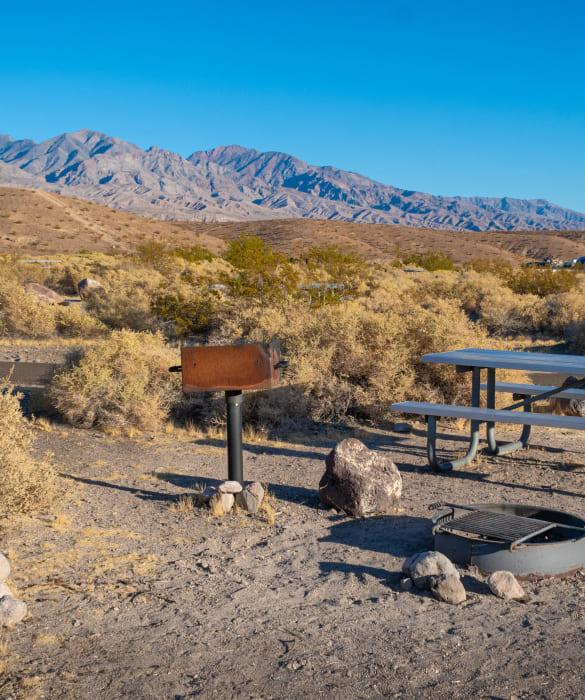
Mesquite Spring Campground
- Total sites: 40
- Mobile reception: No
- Internet connectivity: No
- Firewood for sale: No
- Food storage lockers: No
- On-site staff: Yes
This spot can be found two miles off of Scotty's Castle Road, below Grapevine Canyon. Travellers in the northern parts of Death Valley would do well to utilise the Mesquite Springs Campgrounds, as they’re best positioned for explorers in this corner of the park. All fees are paid at the pay station in front of the camp.
The generator in this camp runs from 7am to 7pm every day, while quiet hours are from 10pm to 7am. NPS fire grates are provided on every site – and these are exclusively what should be used for fire-making purposes. Fires should not be left smouldering or unattended. This site is prone to flooding, so be sure to check if it’s open prior to your visit.
(Image credit: NPS/J.Gray)
- Standard Camping – $14
- Senior/Access Rate – $7
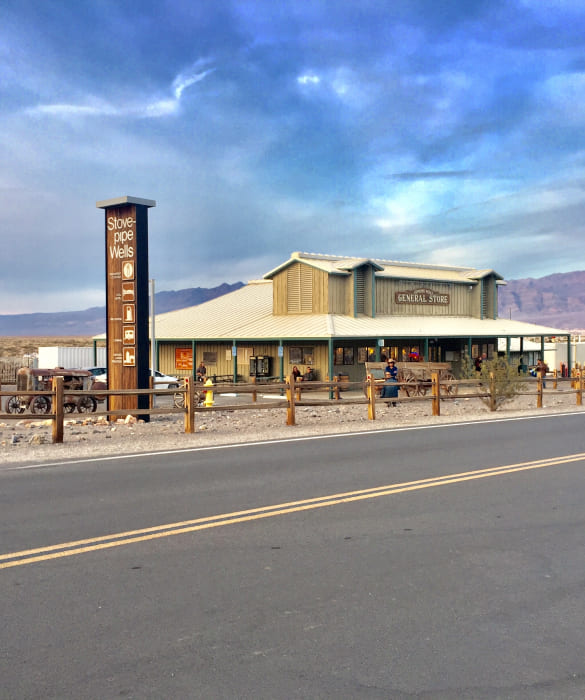
Stovepipe Wells Campground
- Total sites: 190
- Mobile reception: Yes
- Internet connectivity: No
- Firewood for sale: Yes
- Food storage lockers: No
- On-site staff: Yes
Found at sea level in the middle of the park, the Stovepipe Wells Campground offers majestic views out over Death Valley itself, as well as the Mesquite Flat Sand Dunes. With 190 sites on the ground, visitors can find Stovepipe near a general store, ranger station and a private RV park.
Campers are expected to be quiet between the hours of 10pm and 7am, while a generator powers the area from 7am to 7pm every day. Just as with the Mesquite Springs Campground, visitors are only permitted to set fires in the NPS grates provided. No reservations are available, but with nearly 200 sites available it’s usually quite easy to find a spot.
- Standard Camping – $14
- Senior/Access Rate – $7
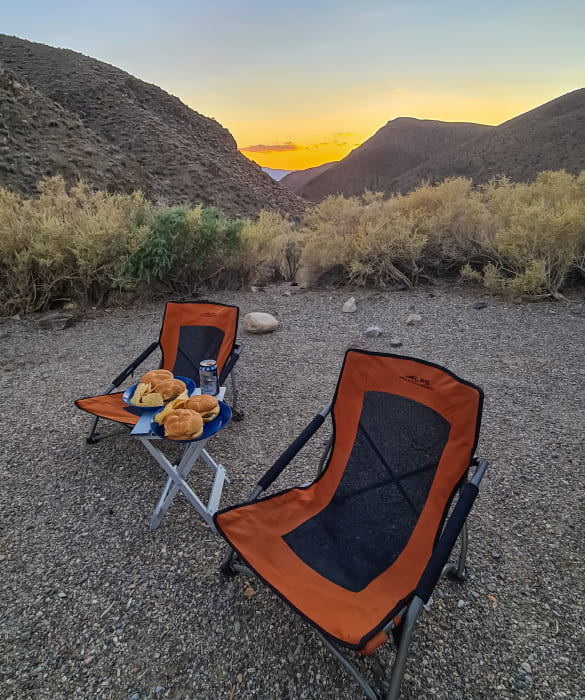
Wildrose Campground
- Total sites: 23
- Mobile reception: No
- Internet connectivity: No
- Firewood for sale: No
- Food storage lockers: No
- On-site staff: No
A slightly quieter spot, Wildrose Campground is a good option for anyone looking for an escape from the crowd. The site is located high in the Panamint Mountains, on Emigrant Canyon Road. It should be noted that this spot is prone to high winds, while the site itself is largely dirt and gravel. The general lack of amenities here might be a struggle for some, but this does at least mean Wildrose is free to campers who stay here.
- All camping is free
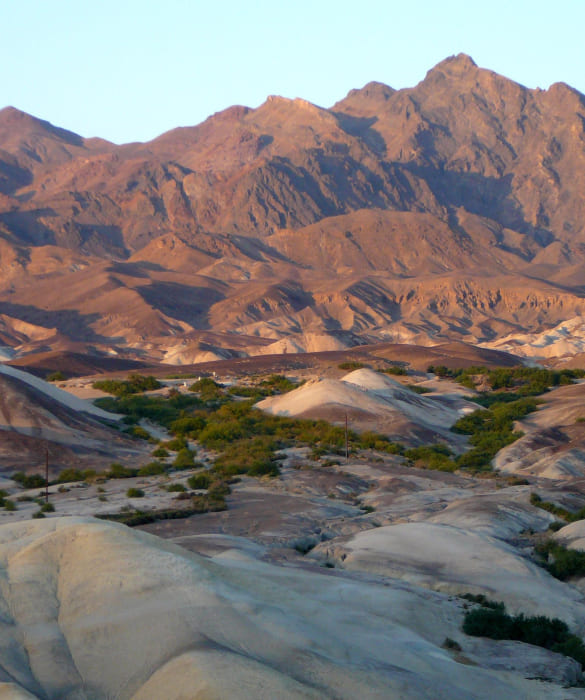
Texas Springs Campground
- Total sites: 92
- Mobile reception: Yes
- Internet connectivity: No
- Firewood for sale: No
- Food storage lockers: No
- On-site staff: Yes
Found in the hills directly above Furnace Creek, Texas Springs Campground is a nice spot for campers looking for total immersion in nature. Generators of all kinds are not allowed, meaning that you get a much more authentic taste of the camping lifestyle. Fires are permitted, but only in dedicated NPS grates.
(Image credit: NPS photo)
- All camping – $16
The best campsites for campervans
If you’re travelling with a campervan or RV, there are plenty of amazing sites to hookup for the night and make base camp. A number of campgrounds in Death Valley have been designed with campervans in mind, owing to the increasing popularity of these kinds of holidays.
Here are some of the grounds which accommodate RVs best, as well as some useful information for those looking to park up in one:
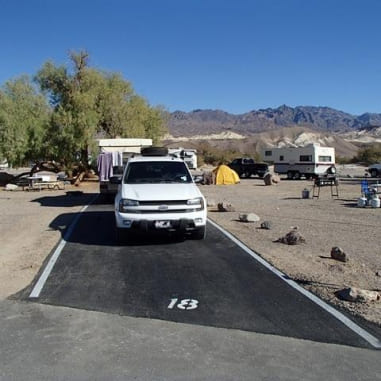
Furnace Creek Campground
RV reservations can be made at Furnace Creek for up to 14 days at a time, and there are a total of eight sites that have full hookup options for your campervan. Owing to the centralised location of this campground, as well as the amenities provided nearby, it proves a continuously popular option for RV campers.
(Image credit: NPS photo)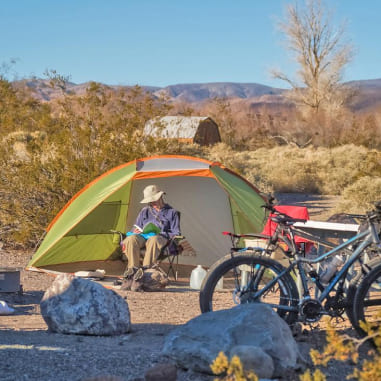
Mesquite Springs Campground
While as many as ten different sites are capable of housing RVs in Mesquite Springs, campers should be aware that the narrow lanes found here make it harder to move bigger rigs around. If you do choose the campground you’ll be able to make the most of running water, flushable toilets, and a dump station.
(Image credit: NPS/K. Moses)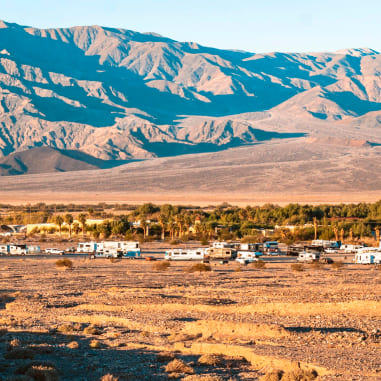
Sunset Campground
Sunset is the biggest campground in the entirety of Death Valley, which makes it a perfect spot for those travelling in a campervan. What’s more, you’ll be able to access most of the more historic spots in the park easily from here.
(Image credit: NPS Photo / Jason Gray)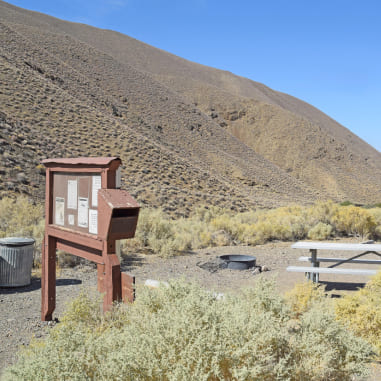
Wildrose Campground
Wildrose is one of the smallest grounds in the entirety of Death Valley, with just 23 sites available for people to pitch up. Despite that, every one of these spots can accommodate an RV, making it a hidden gem for those looking to explore the park by campervan. Just be warned that the site is limited to vehicles up to 25ft in length.
(Image credit: NPS/C. Rohe)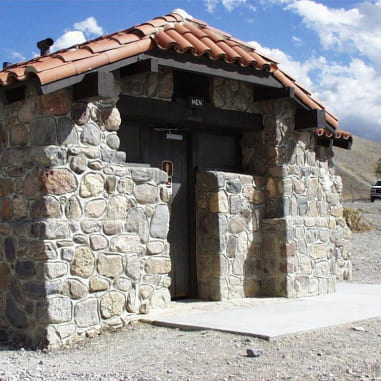
Texas Springs Campground
Much like Mesquite Springs, Texas Springs is better for accommodating smaller rigs, owing to the tight turns that vehicles need to do to manoeuvre through the campground. That shouldn’t dissuade those with smaller RVs, truck campers and campervans from staying here.
(Image credit: NPS photo)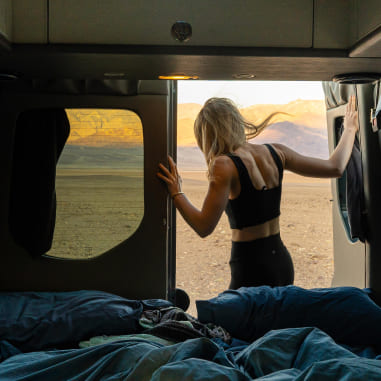
Private campgrounds
Aside from the campgrounds which are provided by Death Valley National Park itself, a number of private sites are also available within its boundaries. These tend to be a little more built-up and resort-like. They offer swimming, dining and even golf in some instances. Naturally, they also cost a little bit more than traditional camping sites.
Backcountry camping regulations
*Some backcountry camping options are currently not available due to flooding and the damage left behind. Make sure to check what is or isn’t available prior to visiting.
Backcountry camping, or ‘wild camping’, is an increasingly popular form of rural holiday. Travellers are able to sleep under the stars, waking up to natural sunlight as they immerse themselves in the majestic beauty of all the nature Death Valley has to offer.
Naturally, with visitors pitching up in areas which are a little off the beaten track, there are a series of regulations and rules which need to be followed in order to ensure they stay safe. In Death Valley National Park, those rules are as follows:
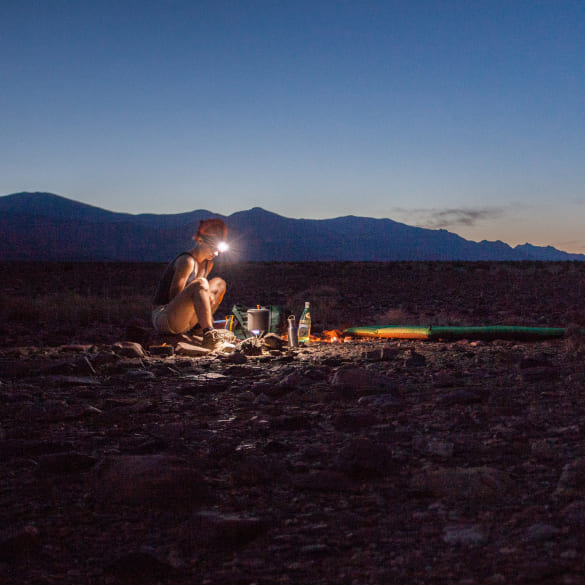
Permits
A free permit is required for a number of roadside camping spots throughout the region. This applies to almost every spot where wild camping is available. Read on to discover what permits are needed for each area, and how to obtain one.
Campfires
Setting a campfire on one of these routes is strictly prohibited. Gathering and burning wood is not permitted in any part of the park outside of the established campground areas. However, camp stoves and propane grills are allowed.
Group size
In order to conserve the land, groups are limited to 12 people at a maximum (with no more than four vehicles). If there are 13 or more campers, or five or more vehicles, a group must split up and camp at least half a mile apart.
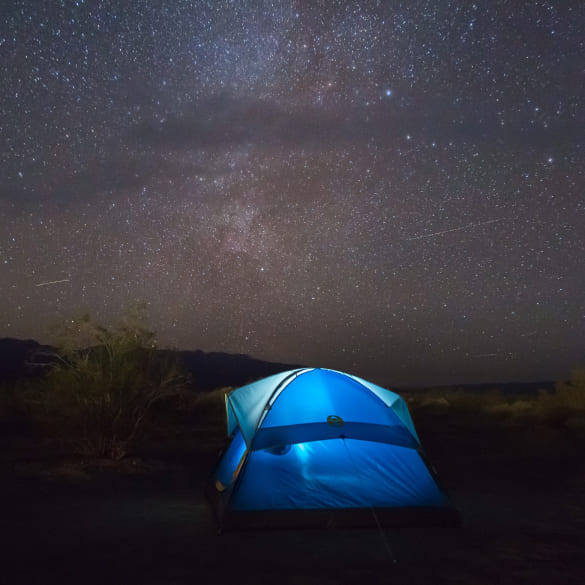
Off-road driving
While driving off of a traditional road is allowed, it’s highly encouraged to display utmost caution when doing so. It’s also recommended that drivers try to stick to routes which have already been disturbed, in order to minimise the impact on the environment.
Pets
Your furry friends are only allowed in developed areas of the park. They are not permitted to access roads, trails or wilderness areas. They also need to be on a lead at all times, and any faeces needs to be cleaned up by the owner.
It’s also vitally important to know where is or isn’t a permitted spot to try backcountry camping. Choosing a locale which is already home to local fauna, or prone to flooding and other natural disasters, is a bad idea. Where you can backcountry camp in Death Valley National Park:
- Along dirt roads, at least one mile down the road from a junction with any paved roads
- Along Echo Road (permit is required)
- Along Hole in the Wall Road (permit is required)
- Along Cottonwood Road (permit is required)
- Along Marble Canyon Road (permit is required)
- Along Greenwater Valley (Furnace Creek Wash) Road (permit is required)
Within these areas, be sure to camp in what are clearly pre-disturbed areas, and make sure to park any vehicles adjacent to the road itself to reduce the impact on the local wildlife. The wilderness boundary is just 50ft from the middle of most dirt roads in the park.
Where you can’t backcountry camp in Death Valley National Park:
- Titus Canyon Road
- Mosaic Canyon Road
- West Side Road
- Wildrose Road
- Skidoo Road
- Aguereberry Point Road
- Cottonwood Canyon Road (first 8 miles only)
- Grotto Canyon Road
- Racetrack Road (from Teakettle Junction to Homestake Dry Camp)
- Natural Bridge Canyon
- Desolation Canyon
- Pinon Mesa Road
- Big Pine Road (22 miles inside of Death Valley National Park)
Furthermore, even in areas where you are allowed to wild camp, a permit is required to do so. All of the following permits can be obtained at the Furnace Creek Visitor Center:
Echo Canyon, Hole in the Wall, Cottonwood Canyon/Marble Canyon, and Greenwater Valley (Furnace Creek Wash) Roads
A free permit can be obtained every day from the Furnace Creek Visitor Center between the hours of 8am and 5pm. Permits are limited, and work on a first-come-first-serve basis. This must be obtained on the day you intend to camp.
Cottonwood-Marble (backpacking)
A free permit is also a necessity for anyone backpacking through Cottonwood-Marble. This can also be found at the Furnace Creek Visitor Center, as well as by talking to someone at the Stovepipe Wells Ranger Station, or even applying online.
All other backcountry camping, backpacking, cabins, or canyoneering
Any additional areas or activities which have not been mentioned can be picked up at the same locations as a Cottonwood-Marble backpacking permit.
Finally, it’s important that any visitors looking to backcountry camp abide by a good code of conduct while they’re exploring. These aren’t rules as such, but rather ethical practices which help to preserve and protect the local wildlife and fauna, and make sure that everyone can keep enjoying the park for years to come:
Watch where you step
This is not only safety guidance, but also good advice for ensuring that the natural landscape of the park remains as untouched as possible. Try to avoid walking in areas which don’t look like they’ve seen much, or any, footfall in the past. Also avoid entering bodies of water even if they’re shallow. Stick to paths that have been naturally carved out to avoid trampling wildflowers, and do your best to disperse into smaller groups so that your impact is reduced.
Pitch up on resistant sites
Don’t place your campsite on areas which are grassy or covered with wildflowers. Rock, sand or gravel are best for your tent, as these present the sturdiest grounding. Also be sure to set up your cooking station away from your sleeping area.
Dispose of waste properly
Any solid waste should be disposed of properly with the support of a cathole. These are four-to-six inch deep holes in the ground, where waste can be deposited and then covered up. Make sure to do this 200 yards from any water source or camp site.
Educate yourself on the area
Each area of Death Valley will have unique characteristics. By understanding more about the area you intend to visit ahead of time, you’ll be best prepared for any potential challenges.




